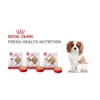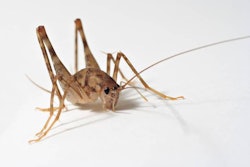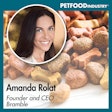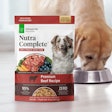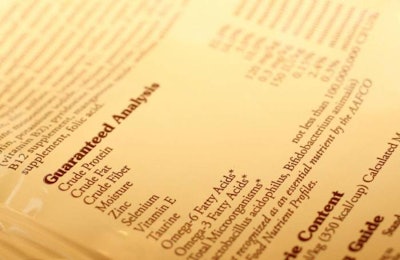
After almost nine years of deliberation, the newly revised Association of American Feed Control Officials' (AAFCO) Dog and Cat Food Nutrient Profiles now appear in the 2016 Official Publication (OP). For new products, pet food companies will have until the end of 2016 to conform. Unfortunately, the print version of the OP contains a number of errors in the profile values. Corrected pages are being sent to those who purchased the print version. In the interim, the online version of the OP reportedly contains the corrected information already.
While there are several confusing aspects of the new profiles, perhaps the issue that raises the most questions has to do with the fatty acids, particularly how to place them in the guaranteed analysis. Prior to the recent revisions, alpha-linolenic acid (ALA), eicosapentaenoic acid (EPA) and docosahexaenoic acid (DHA) were not listed in the profiles. As a result, any guarantees for these compounds, individually or collectively (e.g., "omega-3 fatty acids") had to be placed in the guaranteed analysis only after any and all essential nutrient guarantees. Further, they needed asterisks next to the nutrient name, leading the reader to a disclaimer immediately below and the same type size as the guarantees that read, "*Not recognized as an essential nutrient by the AAFCO Dog (or Cat) Food Nutrient Profiles."
Now, all three are listed by AAFCO; i.e., recognized as essential nutrients for both dogs and cats. While there are minimum values for ALA, and EPA + DHA in combination associated with the growth and reproduction profiles, it just says "not determined" in the adult maintenance profiles. This does not mean the value is zero for adults, however. These fatty acids are recognized as essential for adults, too, it's just that a number can't be pinned down. Actually, for dogs, there also is a de facto minimum requirement for the omega-3s in order to meet the maximum 30:1 ratio of 6's to 3's. For example, if a complete and balanced adult dog food contained 1.1% dry matter linoleic acid (an omega-6 fatty acid) as needed to meet the maintenance profile, it would also require a minimum of 0.0367% of ALA, EPA, DHA or a combination of all three to meet the ratio.
As recognized essential nutrients, the asterisked "not recognized" disclaimer no longer applies to these substances. Also, because they are recognized in the profiles, they no longer go at the bottom, but rather must be guaranteed in the same order as they appear in the profiles. That would be only after moisture (or ash, if declared) and after any essential amino acid guarantees, but before any essential mineral or vitamin guarantees. Table 1 shows an example of how a guarantee for DHA alone would appear. There can also be guarantees for ALA, EPA or EPA + DHA in combination if desired. In any case, it's important to spell out the name of the acids, with the abbreviation added only as an optional parenthetical.
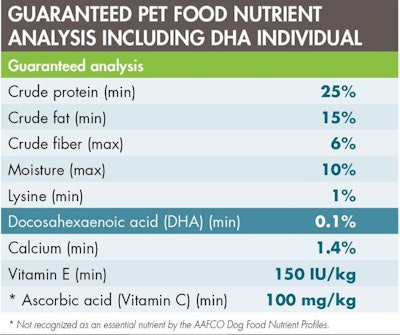
An example of how a guarantee for DHA alone would appear on a guaranteed analysis statement since the AAFCO Dog and Cat Food Nutrient Profiles revisions.
While ALA, EPA and DHA are all omega-3s, they are not the ONLY omega-3s. Some other omega-3s are not considered essential, hence not recognized by AAFCO. So, to guarantee omega-3s as a group, not as a specific omega-3 such as DHA, then it must be listed at the bottom of the guarantees with an asterisk, same as before (see Table 2).

To guarantee omega-3s as a group, not as a specific omega-3 such as DHA, the group must still be listed at the bottom of the guarantees with an asterisk.
Actually, this format is the same as been required for the omega-6s for years. Linoleic acid (LA) and arachidonic acid for cats (AA) are also essential fatty acids, but others (e.g., gamma-linolenic acid, GLA) are not. So, omega-6 fatty acids as a group are guaranteed near the end with an asterisk, while LA (and AA for cats) would be higher and without the asterisk.
Which guarantee is made depends on the associated claims. If a pet food label bears a specific claim for DHA content, for example, the DHA guarantee is required. On the other hand, if there is just a general claim for omega-3s, an "omega-3 fatty acids" guarantee would be appropriate. In either case, though, a parenthetical descriptor such as "(an omega-3 fatty acid)" can accompany the specific essential fatty acid guarantee, though that makes for a rather lengthy nutrient name and underrepresents total omega-3 content (because the guarantee would still be just for the specific fatty acid).
For more insights by Dr. Dzanis

